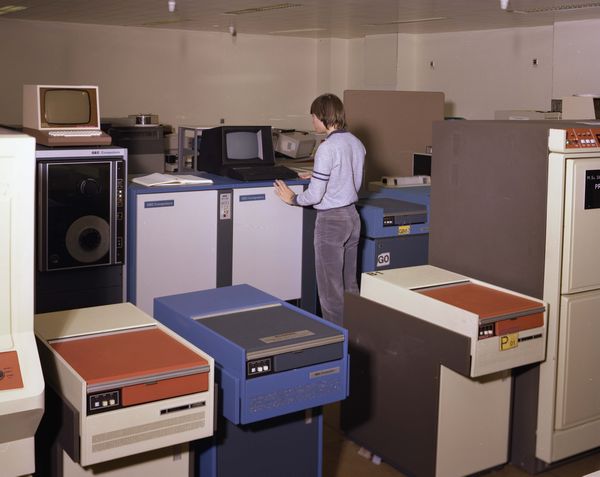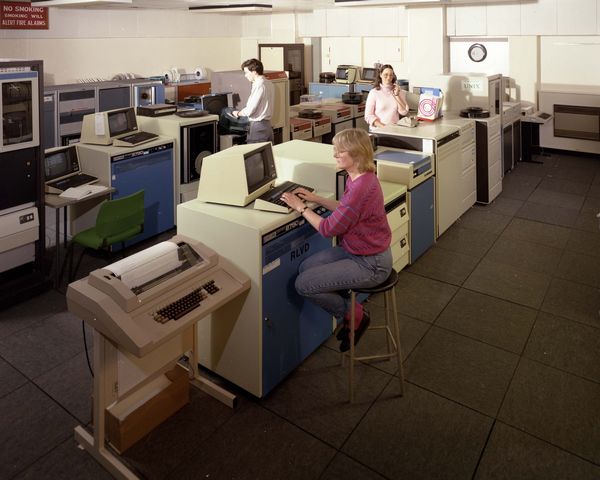

The Alvey programme believed strongly in having standard computer equipment where possible. Early on the decision was made by the software programmes that the operating system of choice was to be Unix. The IKBS programme needed a significant increase in computer hardware in university departments and the community was anxious to purchase Digital Equipment Corporation (DEC) VAX computers either directly from the company or from the UK company Systime that built VAX systems on top of processors purchased from DEC.
However, at the time of the procurement, GEC announced the Series 63 computer system which would be VAX compatible. The Alvey Directorate knew that the purchase of Series 63 computers would be a great boost to GEC and would help the UK's current balance of payments crisis. However, the IKBS community were not in favour of this and were unenthusiastic when GEC Series 63 computers were purchased.

Initially 10 GEC Series 63/30s and 5 Systime VAX 8750s were approved by the Software Engineering and IKBS Directorates. Software development on these machines was the subject of a Memorandum of Understanding between Alvey and GEC (MOU). The GECs were intended to provide a UNIX service, once the Operating System had been mounted, and the VAXes (running BSD 4.2) were given to those sites whose function was to generate software, in order that they might have a reference machine, and also be able to import and export software. The sites were:
Those marked with * had a VAX as well. Imperial, with active departments in both SE and IKBS, were assigned two GECs as well as a VAX. Subsequently, Newcastle was added to the set of sites as they had obtained a GEC Series 63 for another project. The machines were installed by early 1984.
The objective of the Infrastructure provision was to allow SE and IKBS researchers access to UNIX systems to run special software such as LISP, PROLOG, HOPE, ML. Berkeley 4.2 UNIX was the standard system used for research in these areas in the USA. Installing the VAX systems running BSD 4.2 Unix was quite easy as the operating system was well-known, and in consequence the VAX systems were heavily used early on. Each site had a Site Manager appointed to look after the machine and to contribute to the Programme in other ways. A group of 6 people under Eric Thomas supported the VAX and GEC systems from Informatics.
Early on, Informatics assisted GEC in providing UNIX on the Series 63, helping with the porting of utilities, providing accounting and distributing the software supplied by GEC to the sites. The work was covered by the MOU. Initially, GEC mounted System III UNIX but changed to System V by the autumn of 1984. The Infrastructure was managed centrally by Informatics initially, distributing software to sites and incorporating the extra software required. Support for the Series 63 computers was eventually moved to the Edinburgh Regional Computer Centre under contract.
The long-term role for the Series 63 systems turned into being fileservers for the SUN workstations.
The IBM Unix system called UTS was also mounted on the mainframe systems as part of the Infrastructure. This gave very encouraging results in running large programs on the system. PROLOG, FRANZLISP and ML/LCF were mounted. Cambridge University ran in a few minutes on the Atlas 10 proofs written in ML/LCF which would have taken all night on a VAX. The 4250 erosion printer was used extensively from UNIX utilities such as Ditroff and Pic to produce slides, technical reports and books. The combination of UNIX with the power and peripherals of an IBM mainframe service provided a facility unique in the UK at the time.
Over 50 Sun workstations were also purchased and distributed to University users.

See also: